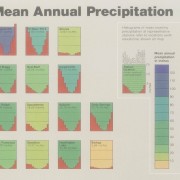Peter Gleick: What Do You Know? Water Conservation and Efficiency Actually Work
New report documents water use in Colorado River Basin.
A new analysis from the Pacific Institute (Municipal Deliveries of Colorado River Basin Water, authored by Michael J. Cohen) documents real changes in population and water deliveries for 100 cities and water agencies in the U.S. and Mexico that deliver and use water from the Colorado River Basin. Total population in these areas grew by more than 10 million people between 1990 and 2008, but water use per person dropped by around 20 percent over the same period (around 1% per year).
The report focused on municipal deliveries. While agriculture uses more than 70% of the Colorado River, municipal use (including residential, commercial, industrial, and institutional uses) is the fastest growing sector. (The full report can be downloaded, free, here.)
Water taken from the Colorado River watershed now meets some or all of the needs of almost 35 million people living both within and outside of the actual basin, including Las Vegas, Phoenix St. George, Cheyenne, Denver, Albuquerque, Salt Lake City, Los Angeles, San Diego, and Tijuana. From 1990 to 2008, total municipal water deliveries from the Colorado River basin increased by more than 600,000 acre-feet (from 2.8 to 3.4 million acre-feet; deliveries from all sources rose from about 6.1 to 6.7 million acre-feet), a rate much slower than population growth. If water deliveries had increased at the same rate as population growth, they would have grown by almost two million acre-feet – an amount of water simply not available for delivery.
During the same period, per-capita water delivery rates declined dramatically in many populated areas, such as Albuquerque (38%); Southern Nevada/Las Vegas (31%); Phoenix (30%); and San Diego County (29%). Southern California agencies delivered 4% less water in 2008 than they did in 1990, despite delivering water to almost 3.6 million more people. In fact, 28 water agencies in five different states delivered lesstotal water in 2008 than they did in 1990 despite population growth in their service areas. And almost every one of the water agencies included in the study experienced declines in per-capita deliveries.
Municipal Deliveries of Colorado River Basin Water shows that projecting future water demands should take into account the successes achieved in cities where there are many examples of water conservation in practice that could be adopted or emulated by the less water efficient providers.
How effective are even small improvements in efficiency? Hugely effective, if achieved by everyone. For example, if the 100 water agencies in this study had all experienced per-capita declines of at least one percent per year, total deliveries would have increased by about 300,000 acre-feet instead of 600,000 acre-feet. While saving another 300,000 acre-feet seems small in comparison with the two million acre-foot reduction already achieved, it is still a lot of water that had to be captured, stored, pumped, treated, delivered, and retreated as wastewater.
The Colorado River basin still faces a seriously difficult future as long as population continues to grow, and as climatic changes become more evident, altering streamflow volumes, timing, and quality. Someday, the population question will have to be raised and discussed openly. Yet the experience of many water agencies with improving efficiency offers a path forward, where some additional growth can be accommodated within existing supplies and total demands on the basin can actually decline over time. The large number of water agencies from many parts of the Colorado River basin in both the U.S. and Mexico that have already achieved substantial reductions in per-capita deliveries demonstrate what increased water efficiency and conservation can accomplish and should encourage the less successful agencies to promote conservation and efficiency more aggressively in their own service areas.
Now, what about agriculture!
[How did YOU and YOUR water agency do? The Pacific Institute has posted the data used for the report in a spreadsheet here. The data here show a very wide range of per-capita delivery rates among agencies, even in the same areas, suggesting significant opportunities for conservation and efficiency programs.]
Peter Gleick
Originally published by the Huffington Post on June 28, 2011.









Leave a Reply
Want to join the discussion?Feel free to contribute!